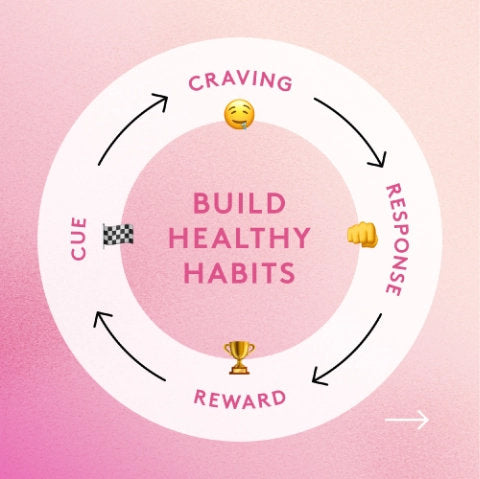Understanding velocity-based training and how you can use it to boost your strength, power and speed.
Being the strongest in the gym won’t make you fastest on the track, the field or the court.
To perform at your absolute best, you need maximum transfer from the weights room to competition.
And that means resistance training smarter, not harder.
Velocity based training is a method that measures the speed and intensity of your movements. Helping you to optimize your training for maximum sports performance.
In this article we’ll talk you through the science behind it, explain the impact it can have on your athletic performance. And show you how to integrate it into your workouts.
Contents:
- Velocity based training is a method that uses a movement sensor to track the speed of each exercise
- There are several benefits to using VBT, including the prediction of One Repetition Maximum (1RM); exertion-load (force velocity) profile; identification of minimal velocity thresholds and analysis of specific strength qualities
- Velocity measures can highlight fatigue and unreadiness to train
What is Velocity Based Training?
In the modern world of coaching, strength training is a must for all sports.
Whether you’re a jockey or a judo athlete, into kayaking or kickboxing – strength and conditioning in the gym will make you perform better.
Every sport is different. Not just in terms of rules or skills, but also in terms of strength qualities.
For a sport incorporating resistance training like powerlifting, it’s about maximal strength (and power) and the ability to exert huge forces upon external objects. For other sports such as gymnastics, it’s more about relative strength - the ability to control and propel their body.
Then there are sports that require huge, short bursts of explosive strength - such as sprinting and weightlifting.
And because no two sports are the same, no two strength programs should be the same either. If you want the best possible results, you need to target your resistance training specifically to the sport.
What do Velocity Based Training (VBT) trackers measure?
Velocity based training has been around for years. Probably longer than you think. But as technology has become more advanced, sport scientists have been able to log and track data more easily and effectively than ever before.
There are a range of different machines and manufacturers, each with their own measures. But generally speaking, VBT trackers can:
- Log reps, sets, power output and reps-by-reps velocity
- Highlight decreases in each variable so that you can adapt training in real time
- Sync data and store it in an athlete file
- Show progression and regression in strength qualities
- Customize velocity zone and targets
- Increase motivation to train hard

Velocity based training (VBT) relates to movement speed and ‘intensity’.
Take two athletes who both back squat the same relative load. Let’s say it’s 85% of their maximum. This is a typical percentage-based training (PBT) approach.
And that 85% will have been calculated by a previously tested 1-rep max (1RM).
At first glance you’d say that they were both lifting at the same intensity, right? Based on them both using the same relative percentage of their maximal life.
But here’s the thing…
Lift intensity is key to Velocity Based Training
What if one athlete lifted using maximum effort and the other with just a little? This would obviously change the intensity of the lift based around the physics of effort and workload.
VBT uses a movement tracking device to measure the speed of the movement. In this case the bar speed during the back squat.
Not only does it give an indication of velocity, but also daily fluctuations in strength and conditioning - something that load velocity and percentages can’t always tell you.
After all, sometimes you can move the same weight and it feels easier or lighter dependent on your state of fatigue.
What are coaches measuring with Velocity Based Training?
Coaches of different sports will want to look for a variety of thing depending on the sport. However, there are a small number of common measures used in VBT for tracking athletic progression and performance.
These have been reported by Garcia-Ramos et al. in the Journal of Strength and Conditioning Research.1
- Mean concentric velocity
- Mean propulsive velocity
- Peak concentric velocity
In VBT it is common for coaches to measure the mean concentric velocity. This is the average speed throughout the whole upward (concentric) phase of the lift and is a popular measure for exercises such as the bench press, back squat, deadlift etc.
The mean propulsive velocity measures the average velocity from the start of the concentric phase of the lift until the acceleration of the bar is lower than gravity (which equates to -9.81 m.s-2).
The peak concentric velocity of a lift is the maximum instantaneous velocity value reached during the concentric phase at a given load. It is calculated every 5 milliseconds so as to give a reliable and valid reading.
Integrating velocity-based training into an athletic program
As sport science becomes better and better, new technologies are being used to help athletes gain the upper hand. Coaches continue to periodize training around volumes and loads.
Strength training still revolves around key parameters of load, reps, sets and rest times. But velocity tracking is becoming an important factor in high performance.

Calculating training loads using Velocity Based Training instead of PBT
Earlier we gave an example of two athletes using 85% of their 1RM as their training load for the session. It was calculated based on a 1RM test - without knowing this you can’t prescribe 85% as you’ve nothing to work off.
The problem with using PBT alone is that you can’t tell if training is improving your 1RM without retesting later down the line. In theory, you could train for 5-6 weeks using 85% and after testing realize the athlete hasn’t got any stronger.
Not only that. Regular 1RM testing can be tiring, psychologically draining and can also increase the risk of injury. It just isn’t practical.
VBT on the other hand gives instantaneous feedback about.
Science of the force-velocity curve (F-V curve) tells us that the heavier the load you’re lifting, the slower it’ll move. This is simply down to the delayed time it takes to recruit maximal muscle fibers. In other words, force and velocity are inversely related.
So if you can move a heavier load faster, you’re producing more force and showing an improvement. Likewise, if you lift a heavier weight at the same velocity of your previous load, it is also a sign that you’re improving.
Using Velocity Based Training to predict 1RM through load profiling
Because of what we know about the F-V curve, slower velocity lifts will be nearer the 1RM simply because the load is getting heavier and the load velocity decreases.
Note: This is presuming that the lifter is exerting maximum intensity or the velocity loss could just be down to poor effort.
Using linear regression calculations and some predictive analysis, VBT devices are able to profile your 1RM. All you need is velocity zone and profiles at different loads performed with maximal effort, so that a pattern of velocities can be plotted.
To quantify your 1RM, VBT calculates your minimal velocity threshold (MVT). This refers to the average concentric velocity produced during your last successful rep during a rep-to-failure test.
This is because research2 shows that the bar speed during the final rep of the test corresponds well to an actual 1RM attempt.
Optimizing transfer of strength training to sport specific performance
VBT works on velocity thresholds which transfer to different strength qualities. For example, moving a lighter load faster than 1.5 m.s correlates to starting strength, whereas speeds of 0.45-0.75 m.s target accelerative strength.
And if your goal is to improve absolute strength you should use bar speeds of 0.15-0.35 m.s.
It’s worth noting that there is a lift-by-lift variation in speeds due to levers and velocity range of motion. This is just a guide but does highlight how different velocities correspond to specific qualities.

Taken from www.breakingmuscle.com
Within strength and conditioning research and coaching, the term dynamic correspondence is often used to define how a training stimulus transfers to performance. And there’s more to optimal transfer than a simply ‘get stronger, get better’.
We know now that targeted training is more effective. And that working on specific strength qualities transfer better to sports performance. Factors that influence dynamic correspondence include:
- Force-vector
- Joint angle of peak contraction
- Eccentric, concentric and isometric phases and actions
- Type of external loading
Research shows that heavy loads improve force production due to muscle crossbridge attachment, tendon stiffness and lateral force transmission. But it’s the speed of movement3 that influences power output and velocity the most.
In sports where you need to move quickly – which, let’s be honest, is most of them - lifting heavy all the time isn’t optimal. Lifting lighter weights with maximal intent and effort forces (more reps) an increase in neural drive to compensate for limited crossbridge attachment. This is due to the speed of contraction.
Ultimately, heavy load strength resistance training is effective for improving low-velocity strength against maximal loads. But it’s fast, lighter load strength training that is effective for improving high-velocity strength.
Monitoring fatigue using velocity-based measures
Lastly, Velocity Based Training trackers can help to highlight excess fatigue or unplanned decreases in performance. Research has shown that velocity and fatigue states are highly correlated, with declining velocity pinpointing underlying residual fatigue or tiredness.
A decrease in velocity can be caused by accumulated fatigue
Coaches are using VBT to monitor both intra and inter-set rest times,4 By doing so, the effects of accumulated fatigue can be reduced. So the athlete can train safe in the knowledge that they’re building up performance without unnecessary baggage.
It’s a much more precise and analytical tool compared to perceived exertion scales for example.
Research5 shows that if fatigue is caused by the accumulation of lactate or metabolites impairing force productive capabilities, the decrease in velocity occurs in a linear fashion. Whereas if it’s caused by neuromuscular mechanisms, the curve becomes more curvilinear.
Coaches can then use this information to plan recovery strategies for optimal performance.
Final Word on Velocity Based Training
Strength is great. But speed and intensity of movement are key to athletic performance.
To achieve maximum transfer from the gym to the track, field or court you need to target your workouts. In other words, train smart.
Heavy load training is effective for improving low-velocity strength. But for high-velocity strength, you need fast, lighter load workouts.
Velocity based training can help your accurately measure your progress. Helping you to optimize your workouts for the best possible results.
References
- https://www.ncbi.nlm.nih.gov/pubmed/28557855
- https://www.ncbi.nlm.nih.gov/pubmed/16944400
- https://www.ncbi.nlm.nih.gov/pubmed/12094114
- https://www.ncbi.nlm.nih.gov/pubmed/30946276
- https://www.researchgate.net/publication/265227430_Researched_Applications_of_Velocity_Based_Strength_Training












